Cottage gardens are one of the most sought-after styles when it comes to garden designs, thanks to the ease and versatility. From thoughtful planting to charming garden structures, cottage garden ideas welcome an element of escapism whereby we feel like we’re in the heart of the country – even if in reality we’re in the heart of a town.
The planting style is relaxed, creating a rich tapestry of colour from flowers and plants, including annuals and cut flowers. Best of all, there are no rules – simply grow what you love to create a garden that’s uniquely yours. Pollinating insects and birds also love cottage gardens too, making this style of garden a haven for wildlife.
What is cottage garden style?
The secret of cottage-style planting is that it is not too contrived, so rough planning is all that is needed. Don’t have plants neatly graded from short at the front to neat at the back, but mix them up to achieve a more random look. Keep in mind, however, that there is usually a formal framework of hedges or stone terraces behind all that charming disarray.
‘Whether you have flower beds and borders to fill, a patio to update with containers or a front garden to refresh, this timeless look will add beautiful colour to enjoy year after year’ says resident gardening expert and Dobbies Horticultural Director, Marcus Eyles. ‘A classic cottage garden is filled with pastel shades, roses, foxgloves and delphiniums to name a few. Loved by bees and butterflies, your garden will be brought to life with the gentle sound of buzzing and humming – a joyous backdrop to soak up summer sunshine in.’
Cottage garden ideas
1. Grow foxgloves
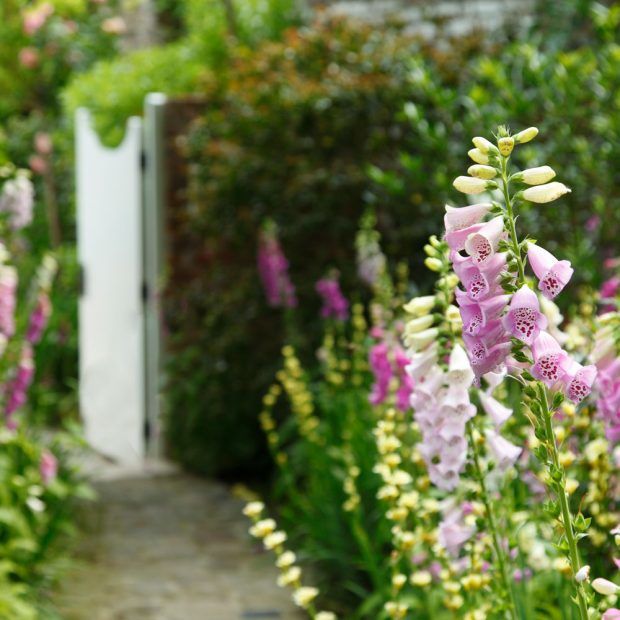
‘With their spires of bell-shaped flowers much loved by bees, foxgloves are a cottage garden favourite’ explains Marcus from Dobbies. ‘Available in creams, pinks and lavenders, they help brighten shady spots and are great planted with Hostas and Ferns.’
These purposeful blooms can be grown in any sized garden plot, even from containers on a small balcony.
2. Let grasses grow

Mowing the lawn is no longer in favour –leave grasses and those with seed heads uncut to help support wildlife. On BBC Gardeners’ World Monty Don encouraged gardeners to take a more relaxed approach to mowing their lawns, allowing nature to thrive. Sarah Mead, creator of the Yeo Valley Organic Garden wholeheartedly agrees.
‘If you only do one thing this year to improve your garden’s value for nature, be more like Monty and cut your grass less, or not at all,’ says Sarah Mead, Head Gardener at Yeo Valley Organic and creator of the Yeo Valley Organic Garden in Somerset.
Sarah continues, ‘Global biodiversity is in decline and our climate is warming. It’s essential that we all recognise the small changes we can make that have a huge collective impact on our environment. Putting your feet up instead of getting the mower out is top of the list!’
3. Welcome wildlife
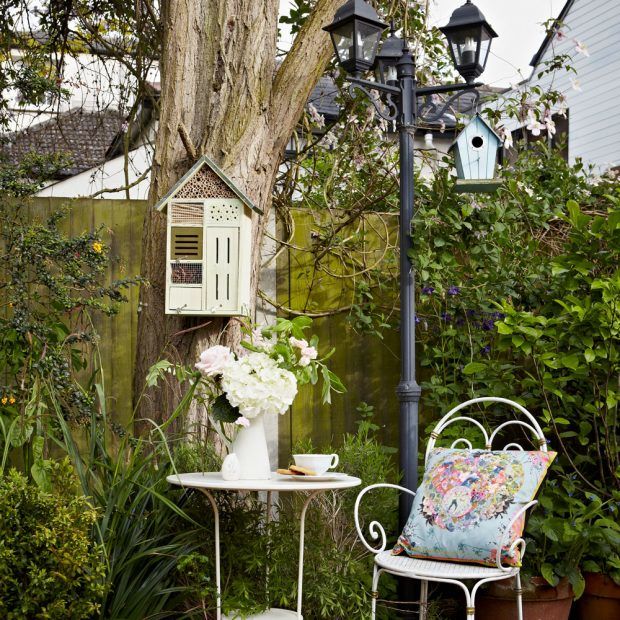
Cottage gardens are ideal for attracting wildlife. Aside from the planting you can encourage wildlife to take up refuge in your garden with the simple addition of bird boxes and insect houses. Not only are they welcoming for wildlife they help to add a charming decorative touch to the garden decor too.
4. Encourage rambling roses
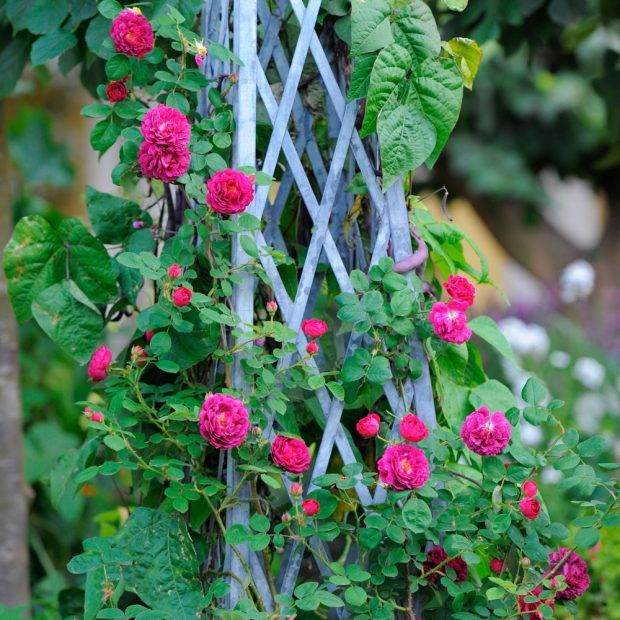
More vigorous than climbing roses, rambling roses grow in a more wild, untidy fashion, and will happily develop into a larger bush, hedge or tree. Climbing roses have a permanent framework of stems that produce flowering side shoots each year. To promote greater flowering, the framework stems should be trained by tying them to wire supports as close to horizontal as possible.
Roses are divided into categories according to their growing and flowering habits. The main groups are large-flowered bush roses (hybrid teas), cluster-flowered bush roses (floribundas), shrub roses, climbers and ramblers.
5. Consider your hedges and perennials
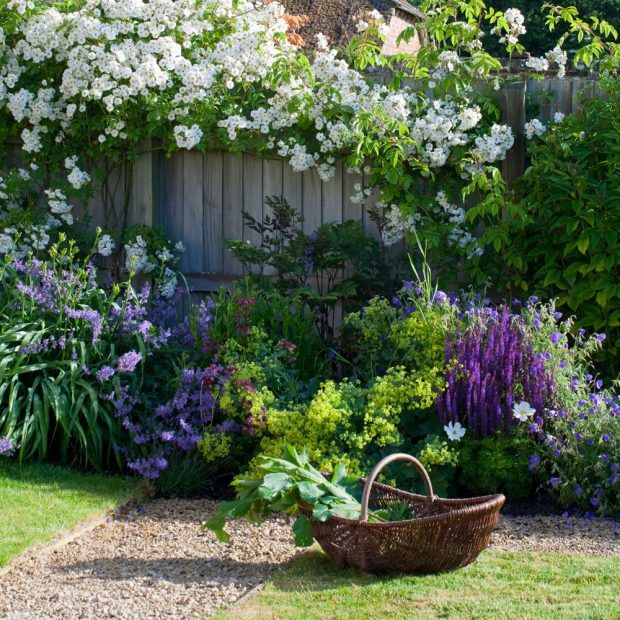
For a classic cottage garden feel chose planting that will deliver. Select classic evergreens such as cypress, holly, box, copper beech or yew. Opt for classic perennials such as foxgloves, bellflowers, daylilies, delphinium and lavender – these will all offer a nice foliage in combination with roses.
6. Set the scene with stone walls
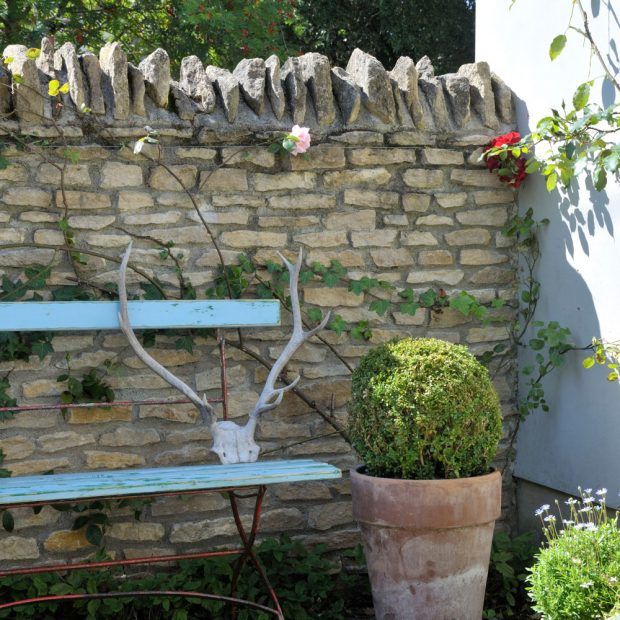
Choose hard landscaping that feels authentic to a rural countryside garden, as this courtyard garden has with its Cotswold stone wall. Add to the cottage garden feel by growing vines, red roses, and topiary plants. Add a rustic garden bench, such as this design with blue painted wooden slats and iron frame, to enhance the cottage-style vibes.
7. Lay winding pathways
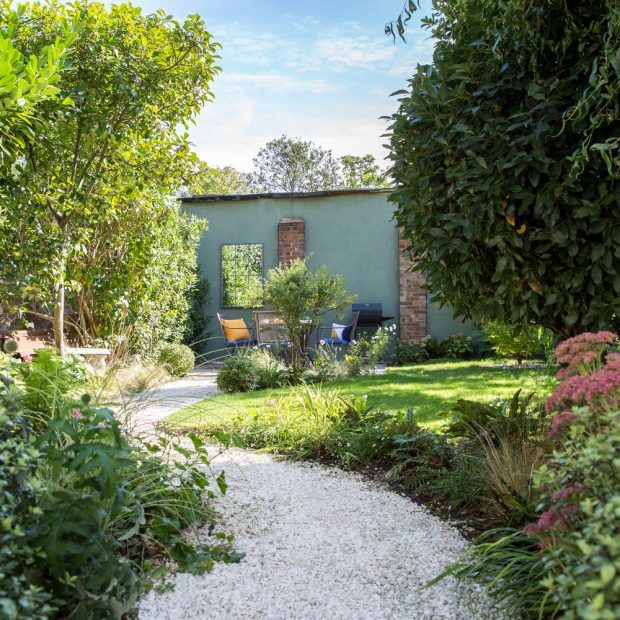
A key design element for cottage gardens is the freedom of form, the layout is encouraged to be less structured and strict than a perfectly manicured contemporary garden design. A gravel path that gentle winds its way within the garden helps to keep the look light and unrestrictive. Draw up plans to decide on where to place your paths, as well as the materials that you will use to construct them. Allow each square to represent a foot of space.
8. Appeal to the senses with aromatic planting
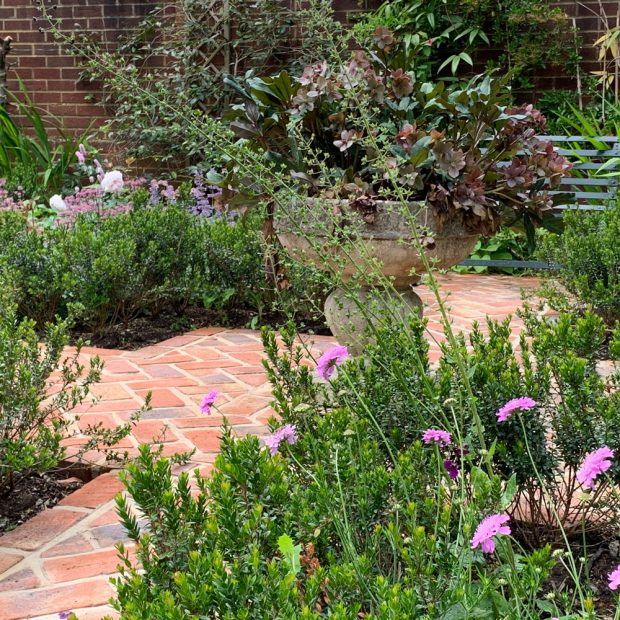
This thoughtful garden design has created a romantic, traditional cottage garden which feels as if it has been there for years. ‘The designer Nina Baxter tells Ideal Home,’Rather than using traditional box hedging I specified Myrtus ‘Tarentina’. The garden is very sheltered and doesn’t suffer from hard frosts so I knew this would be ok through the winter. I love the aromatic foliage and it clips beautifully into low hedging. This was infilled with roses and perennials for an exuberant cottage garden feel.’
9. Champion rustic materials
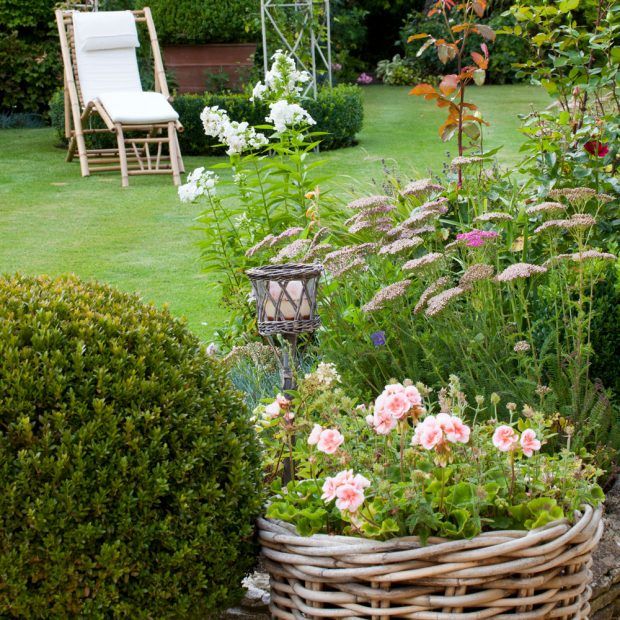
Fill the garden with natural textures and materials to welcome a rural feel to your gardening scheme. From willow fence panels to wicker baskets for planting weave in plenty of country-style materials to accentuate the aesthetic of classic cottage decor. With all natural woven material ensure they are treated to withstand the elements, place them in more sheltered spots within the garden to preserve them further.
10. Grow your own
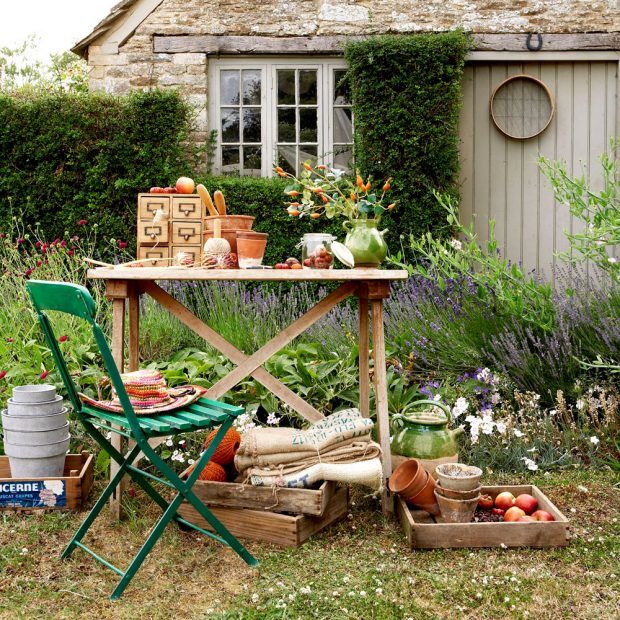
Traditionally cottage gardens were highly practical with an emphasis on growing your own vegetables and herbs, fruit trees – many even keeping livestock. With the grow your own trend making a real resurgence over the last year a veggie plot and potting station is a must for modern cottage gardens too.
Grow your own is one of the fastest growing lifestyle movements with the number of Brits choosing a plant-based diet rising by more than 360 percent over the past decade. Coupled with rising food prices, shortages and a growing appreciation of organic produce, it’s no surprise the grow your own movement will continue to surge in 2021.
11. Fill borders with delphiniums
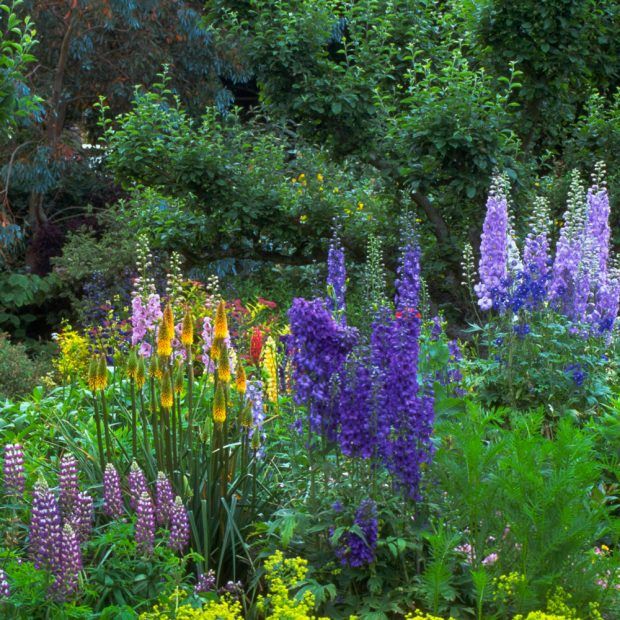
‘Another cottage garden favourite, delphiniums come in stunning shades of white, pink and blue’ Marcus explains. ‘They will often flower for a second time later in the season. Grow through plant supports to hold their flower spikes secure.’ Use delphiniums within borders to add height to your planting scheme.
12. Create structure with arches
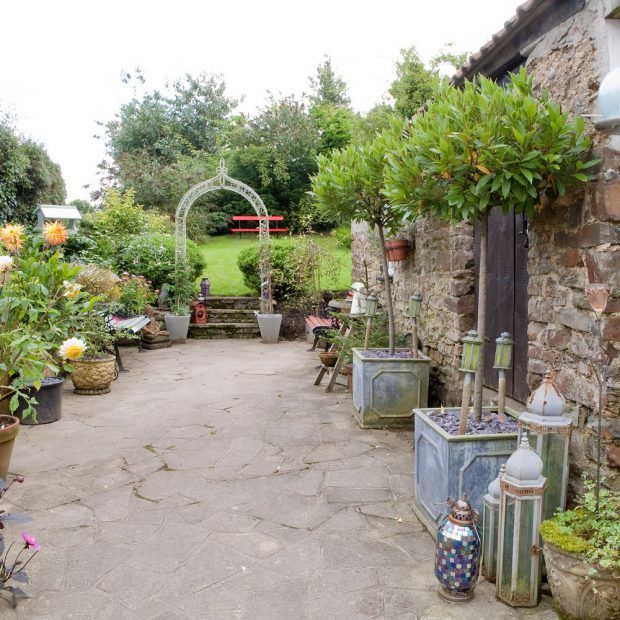
While cottage gardens in the main are relaxed and unstructured it can be beneficial to add key structures to aid planting and add a rustic touch with accessories. A metal arch or pergola is a great example, a style that suits a cottage garden scheme perfectly while at the same time providing support for climbing and trailing plants. Place an archway over a step to highlight the joining of two different garden zones, helping to create a flow from one into the other.
13. Sit among the planting
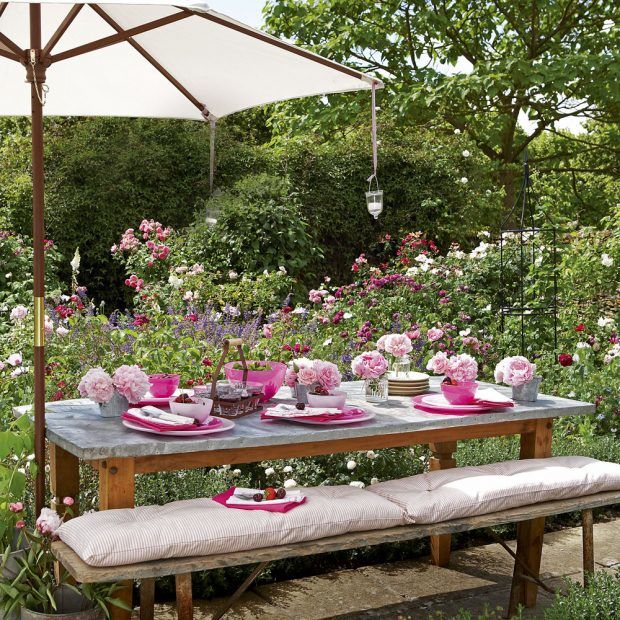
Take time to smell the roses. Immerse yourself fully within the the planting of a cottage garden by placing a dining table among the flower beds. A cottage garden is filled with dense planting that lives wild and free, creating a canvas of colour and scent – ideal for pitching an entertaining spot beside, to ensure you’re getting to enjoy the full extent of the beauty of the surrounding plot.
14. Make the most of front gardens
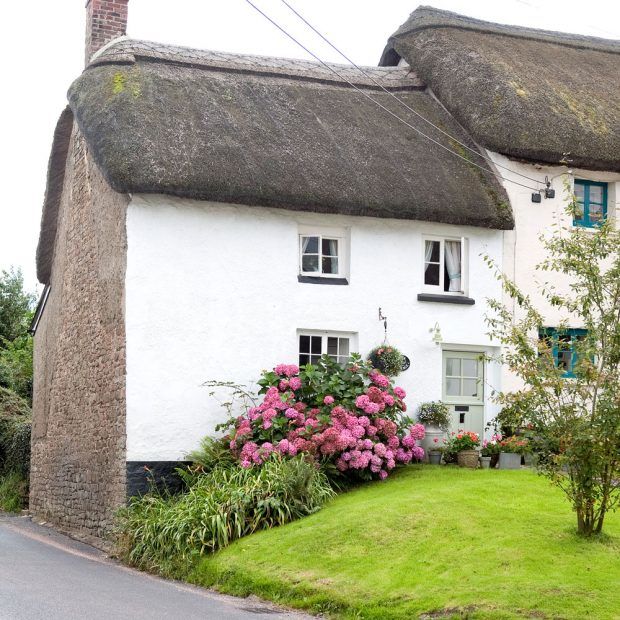
Don’t neglect the front garden when it comes to adding pretty planting. The exterior of this white thatched roof country cottage is beautifully enhanced by a free planting of shrubs, grasses and bedding plants to add uplifting colour. It’s a good indicator from the front garden that the back garden will be bursting with colour and natural loveliness.
15. Style garden accessories
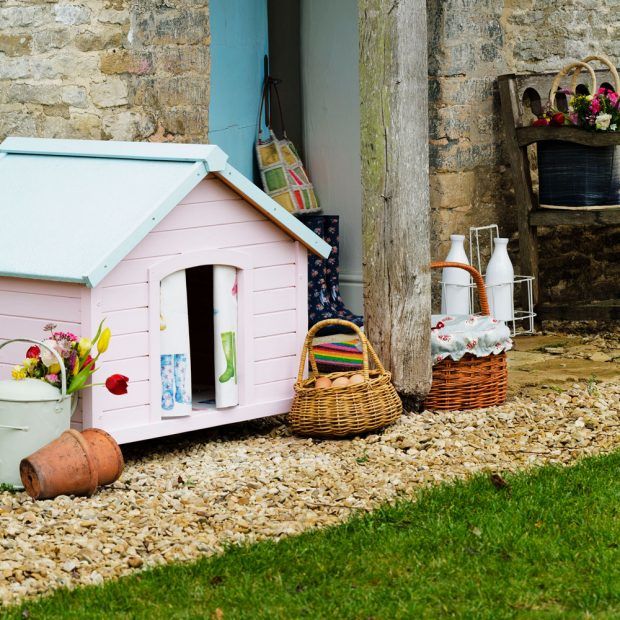
Twee maybe, but this kennel makeover is a fine example of how your pets’ home can be made-over to enhance the look of a cottage-style garden. A lick of paint, preferable a soft pastel to coordinating a planting colour scheme, and sweet fabric door curtains make this dog kennel so much more.
16. Pretty up a potting shed

What cottage garden would be complete without a picturesque summerhouse or she shed? Up the cottage-style decor by adding a lick of paint in an invigorating shade of green and introduce floral print fabrics to soften the interior to make it feel more like a homely cottage.
How do I start a cottage garden from scratch?
Dobbies Horticultural Director, Marcus Eyles reveals his step by step guide for creating a cottage garden;
Prepare the soil ‘First prepare the soil for planting by forking in plenty of manure or garden compost and remove any weeds.’
Select your plants ‘Choose your favourite cottage garden plants, mixing heights, colours, textures and flowering times. A mixture of flowering and foliage plants works well, including
Plan a planting layout ‘Position in drifts for a natural look, planting shorter ones towards the front and taller ones behind. Self-seeding plants such as foxgloves and verbenas are a great way to
Put in place and water ‘Using a garden spade, plant each to the same depth as its growing pot. Firm gently and water well, then add a layer of mulch around your plants to help retain moisture.
Provide support ‘As they grow, insert canes or metal plant supports around taller flowering plants to keep them secure in strong winds. Put them in early in the season and they’ll soon Nurture and prune Cut back faded stems in autumn. Then in spring, fork in some general fertiliser and
What plants make a cottage garden?
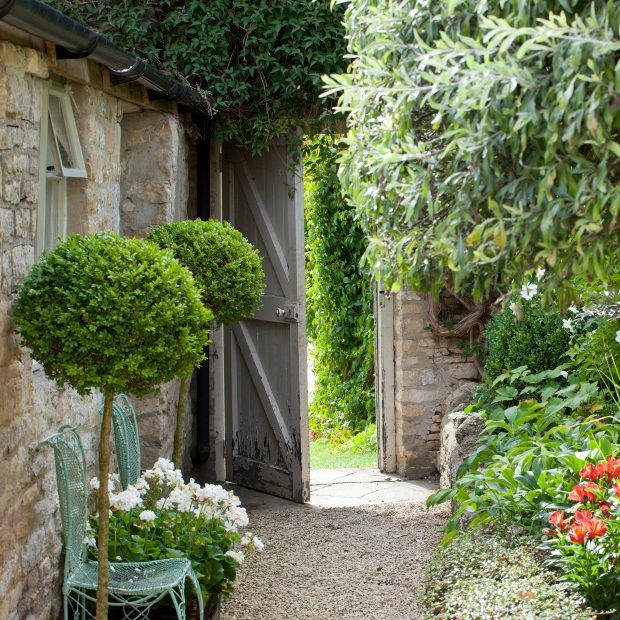
A classic cottage garden is never complete with a variety of roses. The main pruning period for all roses is spring, depending on location in the UK – usually early in March in the south, and around the end of March in the north. If you prune too early in the season, there is a risk that the first flush of growth prompted by pruning may be burnt by frost.
All roses are prone to pests and diseases, so take special care to treat any problems as soon as you spot them. You can prevent them by keeping your roses strong and healthy: pruning, deadheading and feeding will help. Spraying your plants with rose pesticide may help to keep pests at bay.
In addition to roses foxgloves and delphiniums are also hugely popular for cottage gardens. Loved by bees and butterflies, these flowers help to bring a garden to life with the gentle sound of buzzing and humming – joyous background music of mother nature to enjoy the time spent outside.



![A Tranquil Jungle House That Incorporates Japanese Ethos [Video]](https://asean2.ainewslabs.com/images/22/08/b-2ennetkmmnn_t.jpg)









